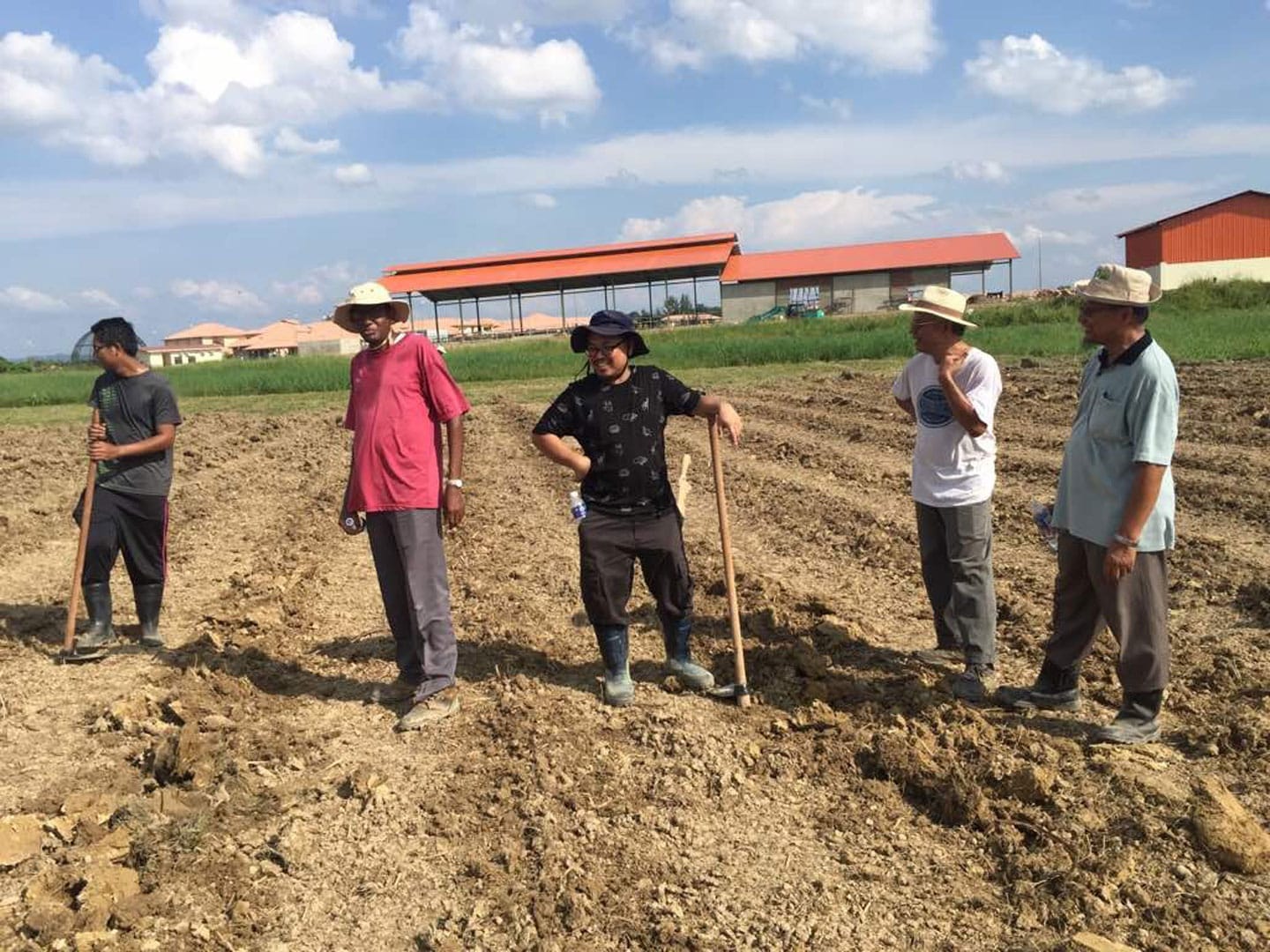Valentine’s Day, Easter, Halloween, and White Day wouldn’t be the same without cacao. And smallholder farming in Malaysia isn’t the same as it was back when the crop was more popular in the country. Dr. Azwan Awang, a lecturer and agricultural scientist at the University of Malaysia Sabah, would like to improve cacao and bring it back with the help of Grow Further.
Grown on small trees in tropical climates, cacao pods are tightly packed with bundles of white seeds. They don’t look like much in their raw form, but these milky white cocoa seeds are the indispensable ingredient for chocolate. Malaysia’s smallholder farmers used to be major cocoa producers, but no longer.
Awang, a lecturer and agricultural scientist at the University of Malaysia Sabah, says cacao farming has fallen out of favor among Malaysia’s smallholder farmers over time as oil palm swept the nation. But Awang still believes in the potential of cacao and cocoa beans to boost the incomes of struggling Malaysian smallholders. He’s looking to potentially partner with Grow Further for his research into growing better varieties of cocoa.
Awang’s mission is to build a better cocoa bean, thereby netting better prices for Malaysian cocoa producers who no longer compete on volume with other nations. “When we’re looking at the farmer, we care about their income and wellbeing,” Awang explained to Grow Further in an interview. “We’re trying to look at how farmers can reap more profits from their farms, so of course, one way is to increase the price of the bean. So how we can increase the price of the bean is increasing the quality of the bean.”
Building a better cocoa bean
Dr. Awang says he’s been working with cacao and cocoa beans since 2003. His research centers mainly on growing cacao in ways that protect and even promote better soil health.
For more than two years now, he’s been investigating what happens when cacao is grown using a mixture of synthetic and organic fertilizers as opposed to using only synthetics or only organics. The initial aim was to find the right cost balance—synthetic fertilizers are expensive, but pure organic farming is difficult and labor-intensive, he explained—while determining the best way to maintain good soil conditions. “These chemicals are very expensive, and we know that over a longer time it will cause a lot of troubles for soil health and of course for the environment,” he told us. “Some people will go for full organics, but for me and my team, we think that full organics is more niche than its capacity to help in terms of production.”
“We’re trying to look at how farmers can reap more profits from their farms, so of course, one way is to increase the price of the bean.”
Now he aims to revitalize the cocoa sector entirely. Still, he admits that it’s unlikely Malaysia will return to its former cocoa glory. But that’s not his goal.
No return to the glory days
Back in the 1980s, Malaysia was among the world’s top producers of cocoa. Now it’s over 98% dependent on cocoa imports for its own consumption. West Africa overtook it a long time ago. To add insult to injury, other nations in Southeast Asia are now finding great success with cacao. Indonesia is now a top producer. And increasingly, Vietnam is even becoming something of a king of chocolate. Dr. Awang takes particular inspiration from Vietnam’s very recent rise in the cocoa bean industry—he said the key to that nation’s success, and to revitalizing Malaysian cocoa production, can be found in specialty or designer chocolates. “Niche chocolates are not a new thing,” he said. “10 years ago, we suggested this, but it’s taking time. Because we cannot force people into production. We cannot force people to plant.”
“Niche chocolates are not a new thing.”
Dr. Awang is now busy designing research and seeking funds to help him and his team unlock the secrets to growing a new variety of cacao, one uniquely suited for Malaysia’s climate and acidic soil conditions while boasting the taste and texture qualities that elite chocolatiers crave. There’s a lot that goes into building a better cocoa bean. “To have specialty beans it requires that you have the cultivars, the clones of the trees as well,” he said. “And then the way you ferment them. And the environment as well.”
Much work ahead
Dr. Awang’s lab is starting, first with the soils, to unlock the right fertilizer blend. He says the two years’ worth of data he’s gathered so far isn’t nearly enough, but some signs are emerging. “We see that there’s no difference whether you use full synthetics or incorporate half of it with organics in terms of yield,” Awang explained. “We see some promising enzymes that we get from incorporating the organic material—some soil enzymes we can see are increased.” Larger populations of soil enzymes and soil insects are a sign of healthier soil, he explained, suggesting conditions for more sustainable and longer-term niche cocoa farming.
Dr. Azwan Awang’s research is just one of many projects Grow Further is considering. His positive attitude and infectious laugh show he’s an optimist at heart. Reviving Malaysian smallholder cocoa farming is a daunting challenge, but he’s starting small-scale, with a clearly defined plan, and ultimate end goal in mind: to help his country’s smallholder farmers diversify their crops while netting better prices in the bargain.
— Grow Further
Photo credit: Dr. Azwan Awang (center, black shirt) and colleagues at a research field on the campus of the University of Malaysia Sabah. Azwan Awang.




